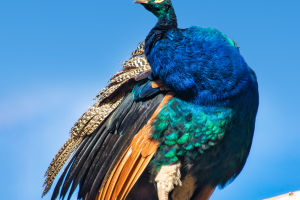Woodpeckers are a vital part of the forest ecosystem, known for their ability to control pests under the bark of trees. These birds have a diverse diet, including insects such as aspen, giddy moths, see-through moths, and stinkbugs.
They are also known for their chisel marks, which serve as indicators of sanitary forest harvesting. A pair of woodpeckers can peck out more than 90% of the giddy worms in a single winter, making them an important contributor to forest health.
There are many different species of woodpeckers, each with its own unique characteristics. For example, the downy woodpecker is around 15 cm long, while the North American black woodpecker can reach up to 47 cm in length.
Other species include the acorn woodpecker, red-headed woodpecker, red-backed woodpecker, green woodpecker, red-bellied woodpecker, Tiberian woodpecker, and Tristane woodpecker. Some of these species are endangered, such as the Tiberian and Tristane woodpeckers.
Woodpeckers can be found all over the world except for Oceania and Antarctica. They are particularly common in South America and Southeast Asia.
Many woodpeckers are non-migratory and settle in one region, while others, like the North American yellow-bellied sapsucker woodpecker and the pouncing flicker, are migratory birds.
One species, the Dendrocopos major, is not currently listed on the conservation list but is threatened by illegal hunting. Traditional Chinese medical theory suggests that all woodpecker species have nourishing and tonic properties that can reduce swelling and pain, which has led to the increased hunting of these birds.
However, many institutions are now studying the captive breeding and attraction of this species and have made some progress in protecting it.
Woodpeckers inhabit various types of forests, including coniferous, mixed coniferous and broad-leaved, and broad-leaved forests in mountains and plains. They are most commonly found in mixed and broad-leaved forests, but can also be found in secondary forests at the edge of forests, and in sparse forests and scrublands along agricultural lands.
They typically forage alone or in pairs, and during the breeding season, they form loose family groups. Their foraging habits include pecking at tree trunks and thick branches and searching for insects in the bark or trunk. They also have a unique feeding method, using their tongues to reach into bark crevices or pecked-out holes in trees to hook pests.
Overall, the distribution of woodpeckers is very large, and their population trend is stable. As a result, they are considered to be a species without a survival crisis.
However, it is important to continue monitoring their populations and protecting them from illegal hunting to ensure their continued survival in the wild. Woodpeckers play a vital role in maintaining the health of forests and should be valued and protected as important members of our natural world.


